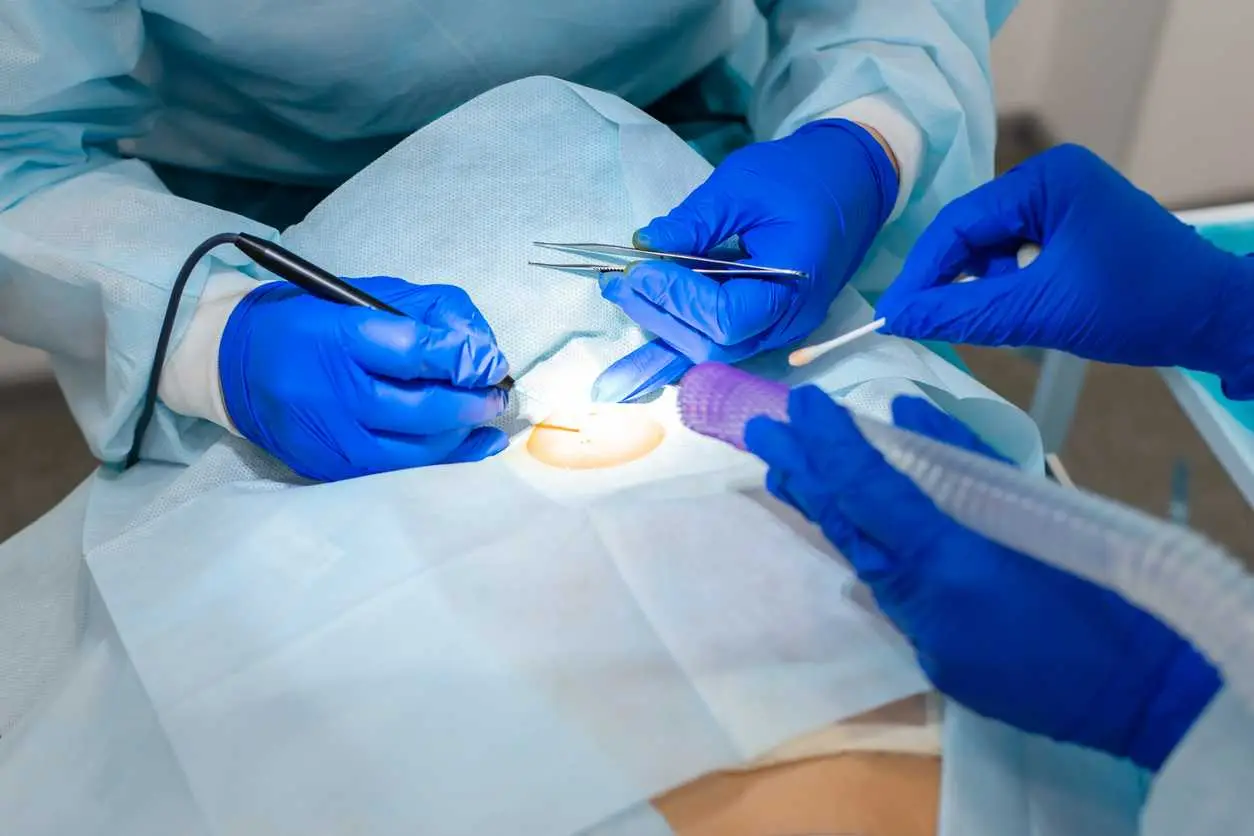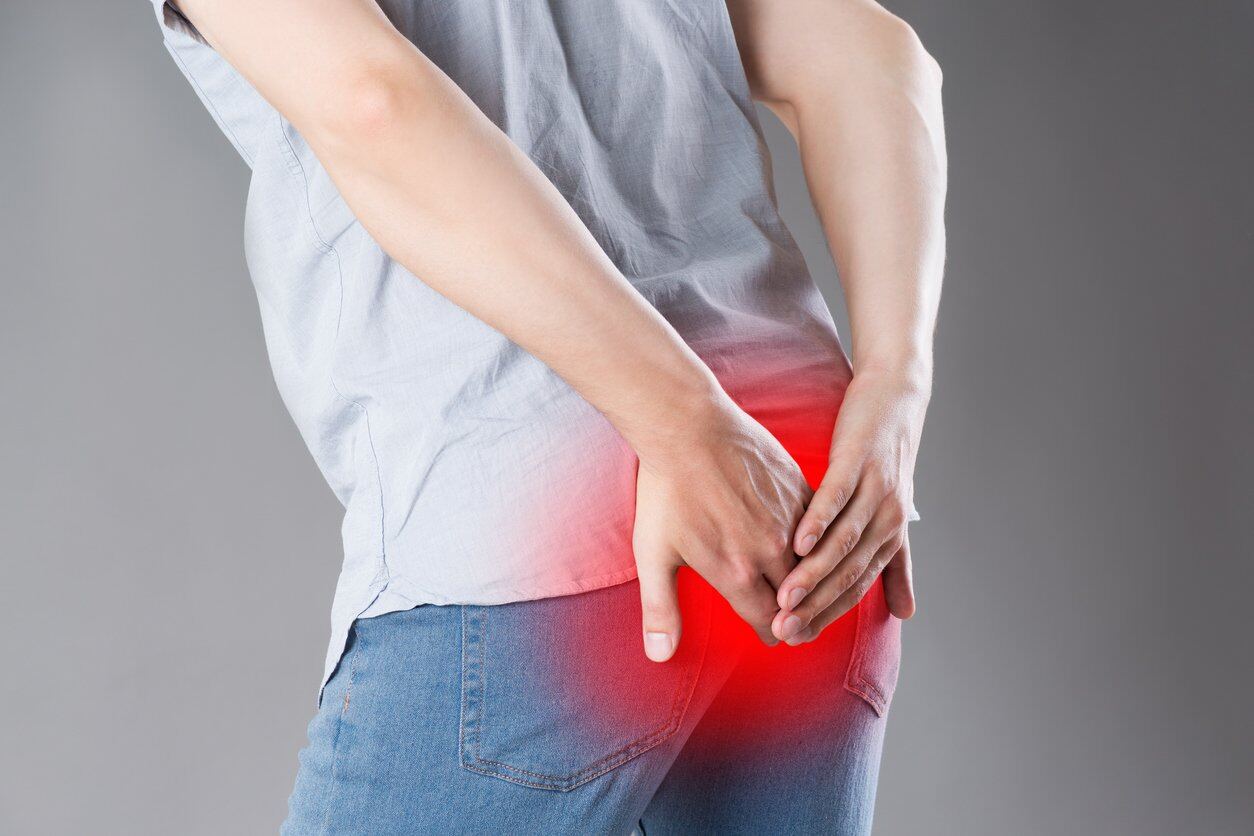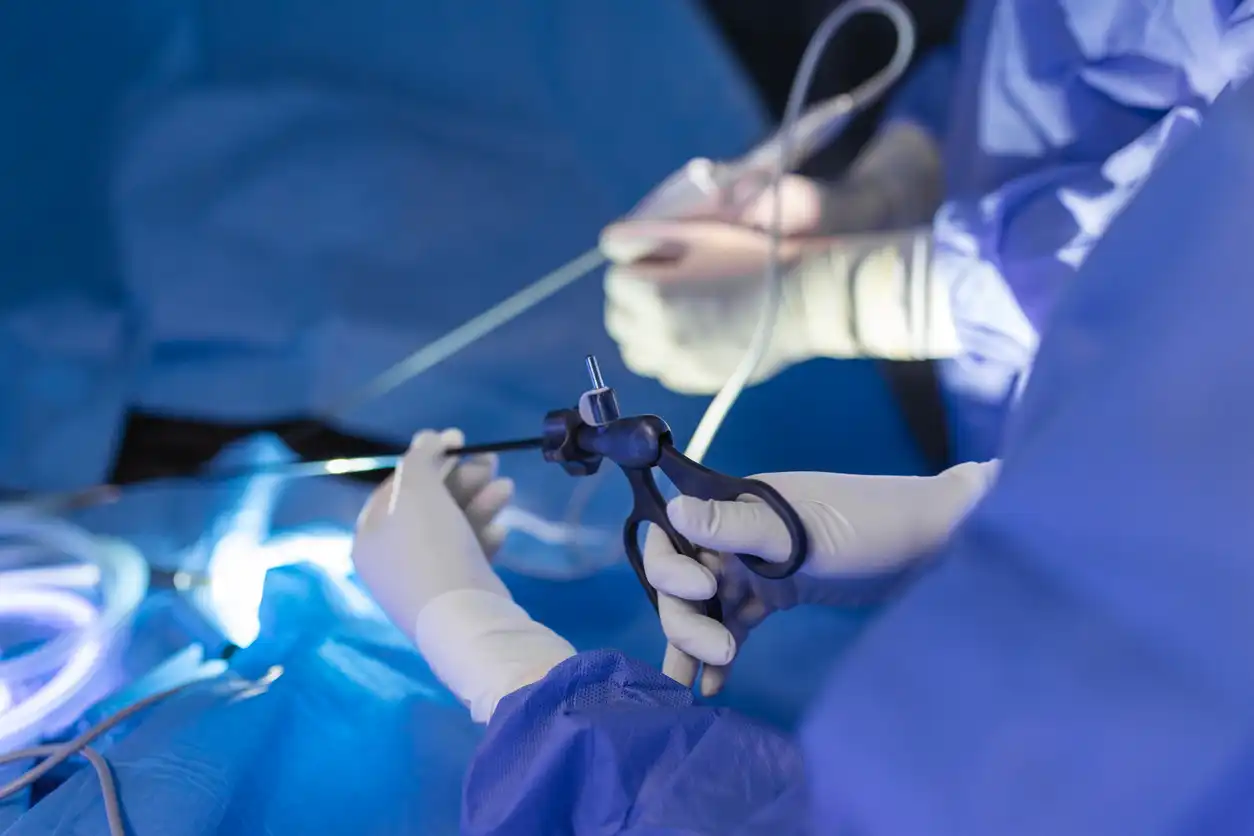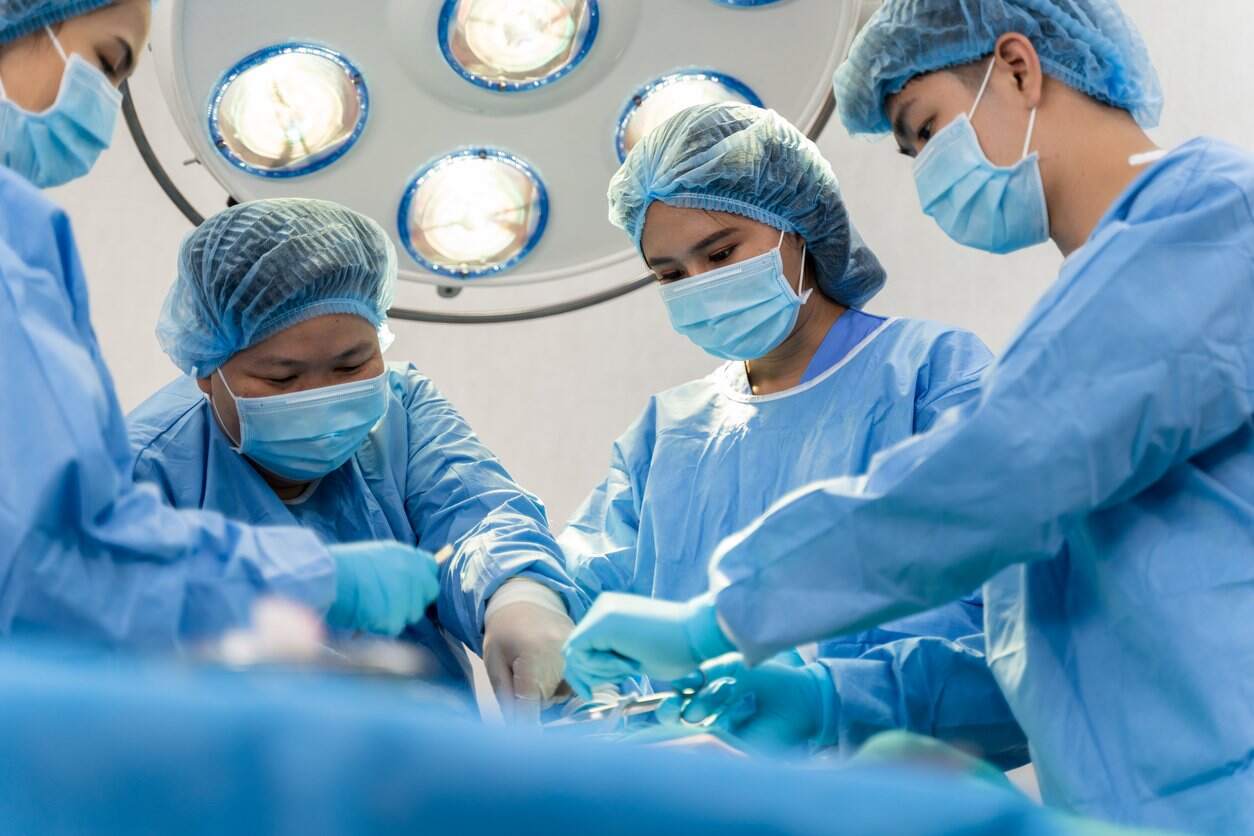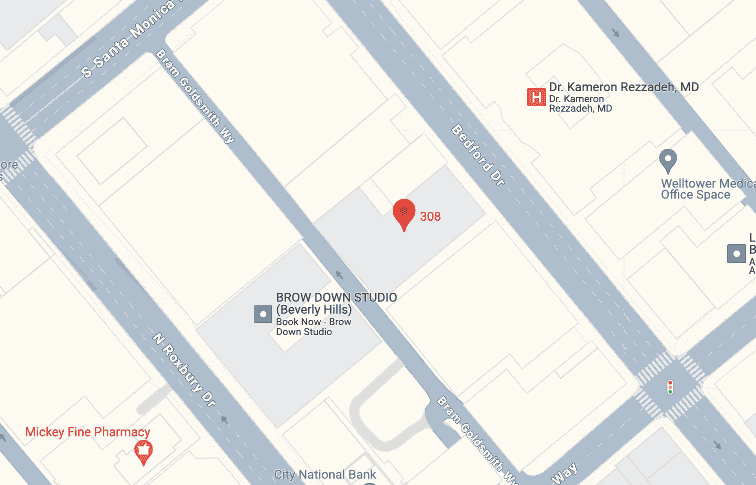A Pilonidal cyst infection can be a painful and bothersome condition. They can significantly impact an individual’s daily life and require proper understanding, treatment, and care. This article aims to provide an in-depth overview of pilonidal cyst infections, commonly known as pilonidal disease. It will address frequently asked questions regarding causes, symptoms, treatment options, and surgery related to pilonidal cyst infections.

What is a Pilonidal Cyst?
A pilonidal cyst is a fluid-filled sac that develops in the crease between the buttocks, just above the tailbone. It usually contains hair, debris, and skin fragments. Over time, the cyst can become infected, leading to the development of a painful abscess.
What Causes Pilonidal Cysts?
The exact pilonidal cyst causes are not fully understood, but several factors contribute to their formation. These factors include:
a) Hair Growth: Excessive hair growth in the affected area can cause hair to penetrate the skin, triggering inflammation and cyst formation.
b) Friction and Pressure: Constant pressure and friction in the buttock crease can irritate the skin and lead to the development of a pilonidal cyst.
c) Congenital Factors: Some individuals may have a congenital predisposition to pilonidal cysts due to the shape of their buttock cleft or the presence of a dimple.
d) Poor Hygiene: Inadequate hygiene practices can contribute to the accumulation of dirt, sweat, and bacteria in the affected area, increasing the risk of infection.
What are the Symptoms of Pilonidal Cyst Infections?
The symptoms of a pilonidal cyst infection may include:
a) Pain and Tenderness: The affected area becomes painful, tender, and may throb or pulsate.
b) Redness and Swelling: The skin surrounding the cyst becomes red, swollen, and warm to the touch.
c) Drainage of Pus or Blood: In some cases, the cyst may rupture, leading to the discharge of pus or blood.
d) Foul Odor: The cyst may emit a foul odor due to the presence of bacteria and decaying tissue.
How are Pilonidal Cyst Infections Diagnosed?
A healthcare professional can diagnose a pilonidal cyst infection by conducting a physical examination of the affected area. They may also review the patient’s medical history and inquire about the symptoms. In some cases, imaging tests, such as an ultrasound or MRI, may be ordered to determine the extent of the infection.
What are the Treatment Options for Pilonidal Cyst Infections?
The treatment of pilonidal cyst infections depends on the severity of the condition. Mild cases may be managed with conservative measures, including:
a) Antibiotics: Oral antibiotics may be prescribed to treat the infection and reduce inflammation.
b) Warm Compresses: Applying warm compresses to the affected area can help alleviate pain and promote drainage.
c) Pain Medication: Over-the-counter pain medications may be recommended to relieve discomfort.
For recurrent or severe infections, surgical intervention may be necessary. The two primary surgical options are:
a) Incision and Drainage: In this procedure, the abscess is incised, and the pus is drained. However, this method does not remove the cyst itself, and the chance of recurrence is higher.
b) Excision and Closure: This surgical procedure involves removing the entire cyst, along with any sinus tracts or infected tissue. The wound is then closed with sutures or left open to heal by secondary intention.
What is the Recovery Process after Pilonidal Cyst Surgery?
The recovery period following pilonidal cyst surgery varies depending on the procedure performed. It is important to keep the surgical area clean and dry to prevent infection. Patients may need to avoid sitting for extended periods and follow specific wound care instructions provided by their healthcare provider. Full recovery can take several weeks or months, and regular follow-up visits are necessary to monitor the healing process.
Finding a Pilonidal Cyst Doctor:
When dealing with a pilonidal cyst infection, it is crucial to find a qualified healthcare professional who specializes in the treatment of this condition. Here are some steps to help you find a pilonidal cyst doctor:
Consult Your Primary Care Physician: Start by scheduling an appointment with your primary care physician. They can evaluate your condition, provide initial treatment, and refer you to a specialist if needed. Your primary care physician may have recommendations or a network of specialists they can refer you to.
Seek Referrals: Ask for referrals from trusted friends, family members, or healthcare professionals who may have had experience with pilonidal cysts or know someone who has. Personal recommendations can provide valuable insights into the expertise and quality of care offered by a specific doctor.
Research Specialists: Conduct thorough research to identify specialists who have experience in treating pilonidal cysts. Look for healthcare professionals who are board-certified in relevant specialties such as general surgery, colorectal surgery, or dermatology. Check their credentials, experience, and patient reviews.
Contact Medical Associations: Reach out to local or national medical associations or societies related to colorectal surgery, dermatology, or general surgery. These organizations often maintain directories of healthcare professionals specializing in various conditions, including pilonidal cysts.
Online Directories: Utilize online directories and healthcare platforms that allow you to search for doctors based on their specialty and location. These platforms provide information about doctors’ qualifications, patient reviews, and contact details, making it easier to narrow down your options.
Insurance Coverage: If you have health insurance, review your policy to understand the coverage and any specific requirements for specialist referrals. Check if the doctors you are considering are in-network providers to ensure optimal insurance benefits.
Consultation and Second Opinions: Schedule consultations with the shortlisted doctors to discuss your condition, treatment options, and their approach to managing pilonidal cysts. During these consultations, ask questions about their experience, success rates, and any potential risks or complications associated with the recommended treatment plan. If you feel unsure or would like a second opinion, don’t hesitate to seek another specialist’s input.
Consider Hospital Affiliations: Take into account the hospital or medical facility where the doctor practices. Ensure that the facility has the necessary resources, infrastructure, and support services to provide comprehensive care for pilonidal cysts.
Remember, finding the right pilonidal cyst doctor is crucial for receiving appropriate treatment and achieving optimal outcomes. Take the time to research and consult with multiple healthcare professionals to make an informed decision.
Contact the Experts Today!
To find out more about pilonidal cysts and receive expert guidance, we encourage you to contact our team of specialists at Pilonidal Experts. Our knowledgeable experts are available to provide you with the information, support, and personalized care you need. Reach out to us today and take the first step towards understanding and managing a pilonidal cyst infection.

